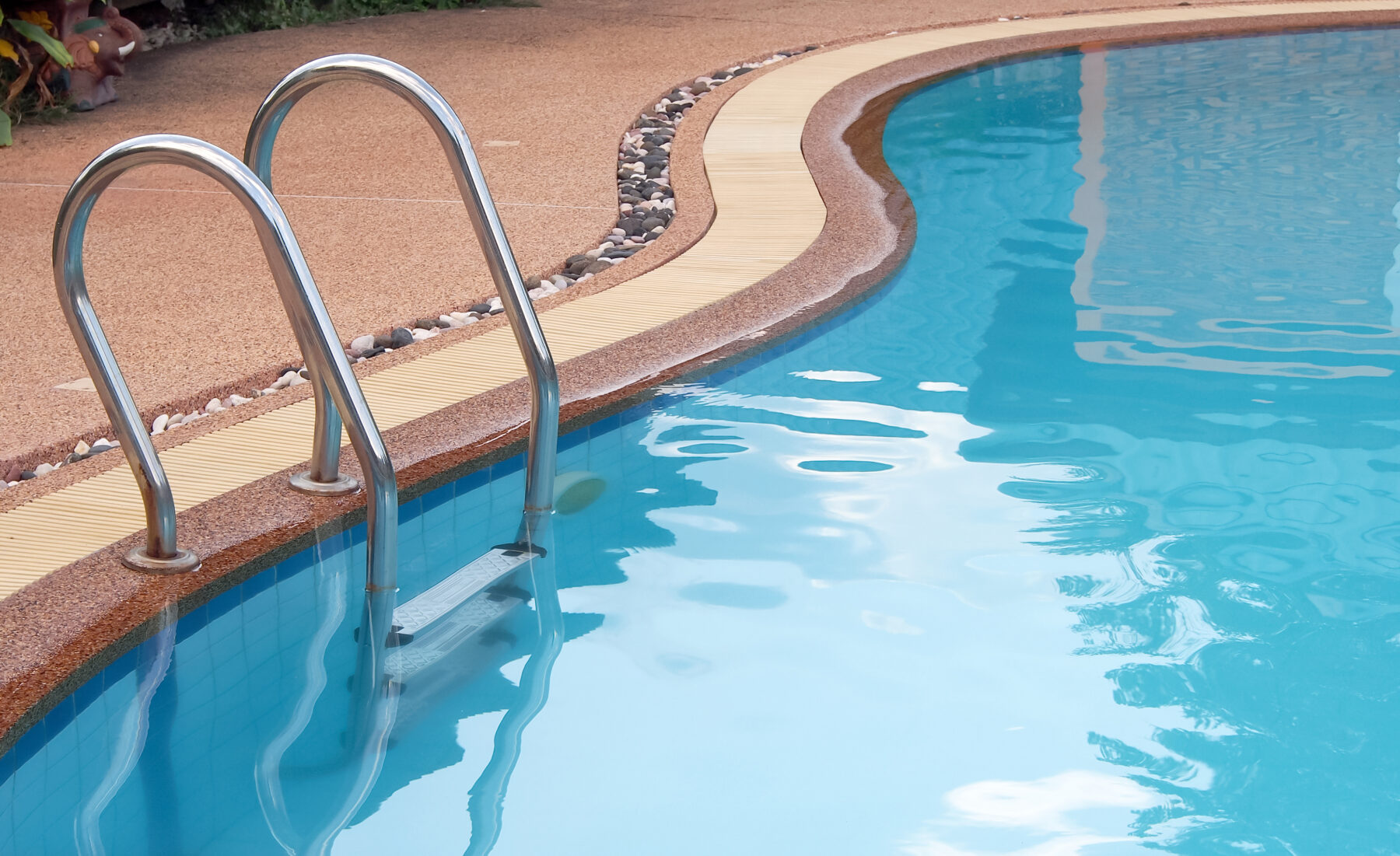7 Tips for Building the Perfect Backyard Pool Walkway
July 31, 2025

- Start with the End in Mind
Every walkway decision should support the larger vision for the pool area. That includes layout, flow, and visual appeal. If the space leans modern, clean lines and minimal joints reinforce the architecture. For more natural landscapes, curved paths using textured stone or aggregate offer a complementary softness. The walkway serves as both a route and as a pivotal piece of the scenery.
Establishing a clear purpose early makes every decision more focused. Materials, spacing, scale, and layout all fall into place faster. Whether the walkway connects to a seating area, wraps the pool to create multiple sightlines, or links utility spaces like a garden or outdoor shower, its role should be defined from the start. That clarity sets the tone for everything that follows.
- Choose the Right Materials
Material selection plays a dual role, acting to enhance the visual appeal while delivering reliable performance. Surfaces near pools need to handle UV exposure, frequent moisture, and shifting temperatures without compromise. Pavers, stamped concrete, natural stone, and composite decking each bring unique advantages. The goal is to choose a material that aligns with the design while holding up under everyday conditions.
Slip resistance on a pool walkway is non-negotiable. Around pools, the surface must stay safe, regardless of how wet it may become. Textured finishes, permeable stone, or brushed concrete finishes reduce the risk without sacrificing appearance. Where aesthetics lead, function needs to follow.
- Focus on Width and Flow
Walkway width influences movement and comfort. Narrow paths feel cramped and awkward when foot traffic increases. For pool walkways, three to four feet wide is a safe minimum, offering just enough room to walk alongside others without stepping into the grass or bumping pool furniture.
Designing with flow in mind creates intuitive movement. Avoid sharp turns or sudden dead ends. Paths should feel like invitations, guiding people naturally between areas: pool, lounge, garden, and back again. Where multiple features exist, subtle branches can separate traffic without disrupting the layout.
- Integrate Drainage Thoughtfully
Water is always in play near a pool, which makes drainage a critical part of the build. In the hope of gaining a specific advantage, issues like surface pooling and erosion are less likely to take place. Permeable pavers, gravel transitions, and subtle grading keep runoff under control while preserving the structure and flow of the design.
Drainage works best when it’s built into the design, not layered on top of it. Linear channels can reinforce clean architectural lines, while recessed rock beds or subtle grading align with more natural layouts. When integrated with intention, the surface stays dry and reads as part of the overall composition.
- Play with Patterns and Borders
Patterns add movement and structure to the surface, turning flat space into part of the visual language. Herringbone layouts, angled lines, or blended material bands introduce elements that complement the overall design. Even minimal shifts, like alternating textures or scored concrete, bring dimension and continuity without being obvious.
Borders serve both form and function. Visually, they frame the walkway and define edges. Functionally, they help contain shifting materials like gravel or mulch, keeping the surface intact and low maintenance over time.
- Use Lighting to Extend Usability
Walkways need to perform, even when the sun goes down. Embedded lighting or low-profile fixtures extend both beauty and safety after dark. Soft uplighting around the path edges highlights texture and helps guests navigate without harsh glares.
Lighting adds clarity and control to the space. When placed with intention, it defines pathways, highlights materials, and supports the atmosphere, all while remaining discrete. Along pool walkways, warm-toned, low-voltage LEDs offer visibility and balance, keeping the design efficient, refined, and easy to navigate after dark.
- Blend the Walkway into the Landscape
A walkway gains strength when it works with what’s already in place. Matching tones, repeating textures, or pulling in materials from nearby elements creates visual alignment that feels intentional. It’s not just about blending in; it’s about tightening the composition and giving the space a clearer sense of structure.
Plants help blur the lines between walkway and greenery. Creeping groundcovers along the edges, ornamental grasses that soften corners, or even potted arrangements can integrate the hardscape with the natural elements. This tactical layering delivers a backyard that feels complete.
A pool walkway shapes how the entire outdoor space comes together. It defines movement, reinforces structure, and brings consistency to the materials and layout. When every detail like spacing, surface, and lighting, follows a clear direction, the result is both functional and elevated. Built with purpose, the walkway becomes part of the landscape’s sense of style, supporting the experience at every step.
